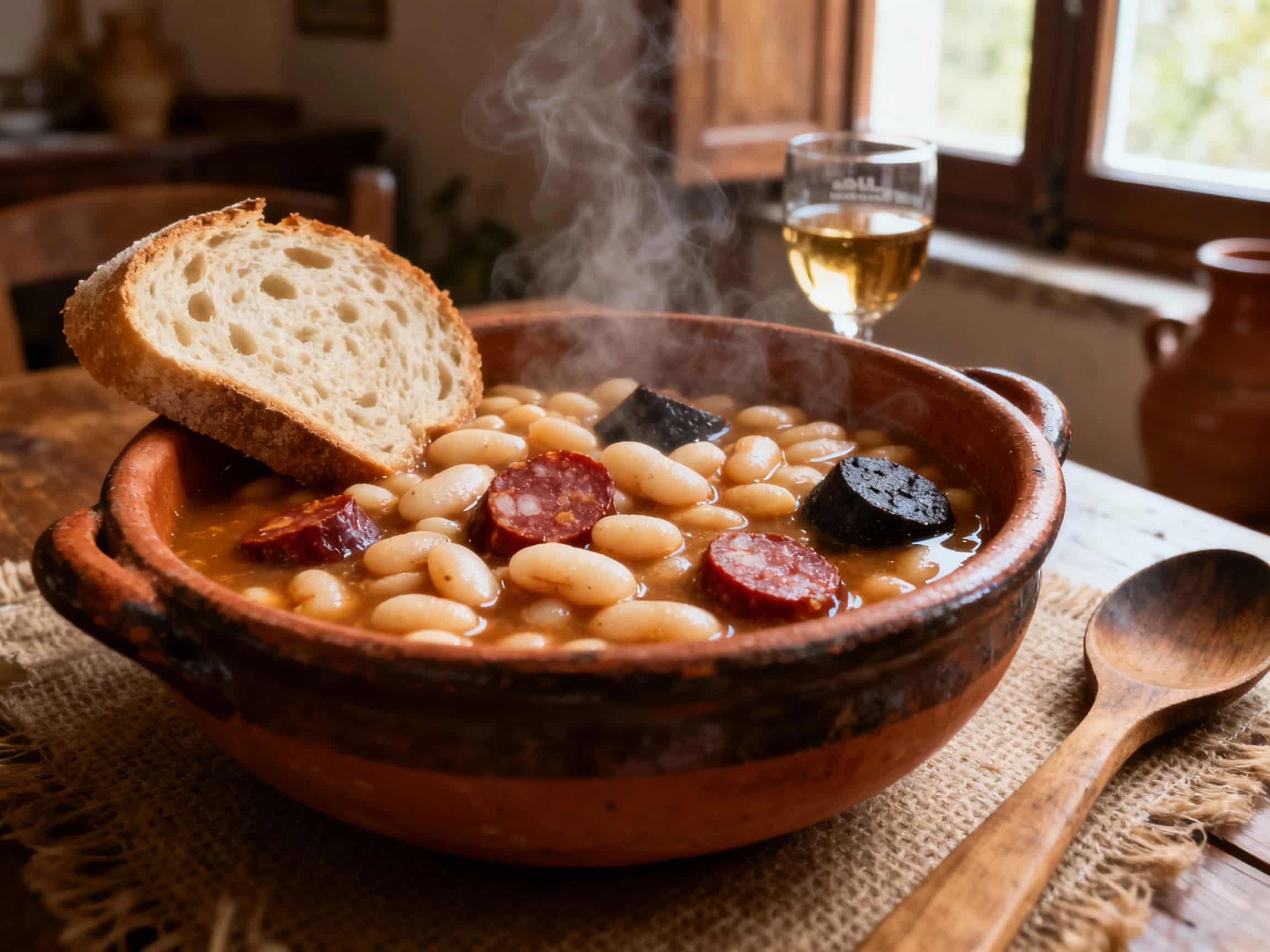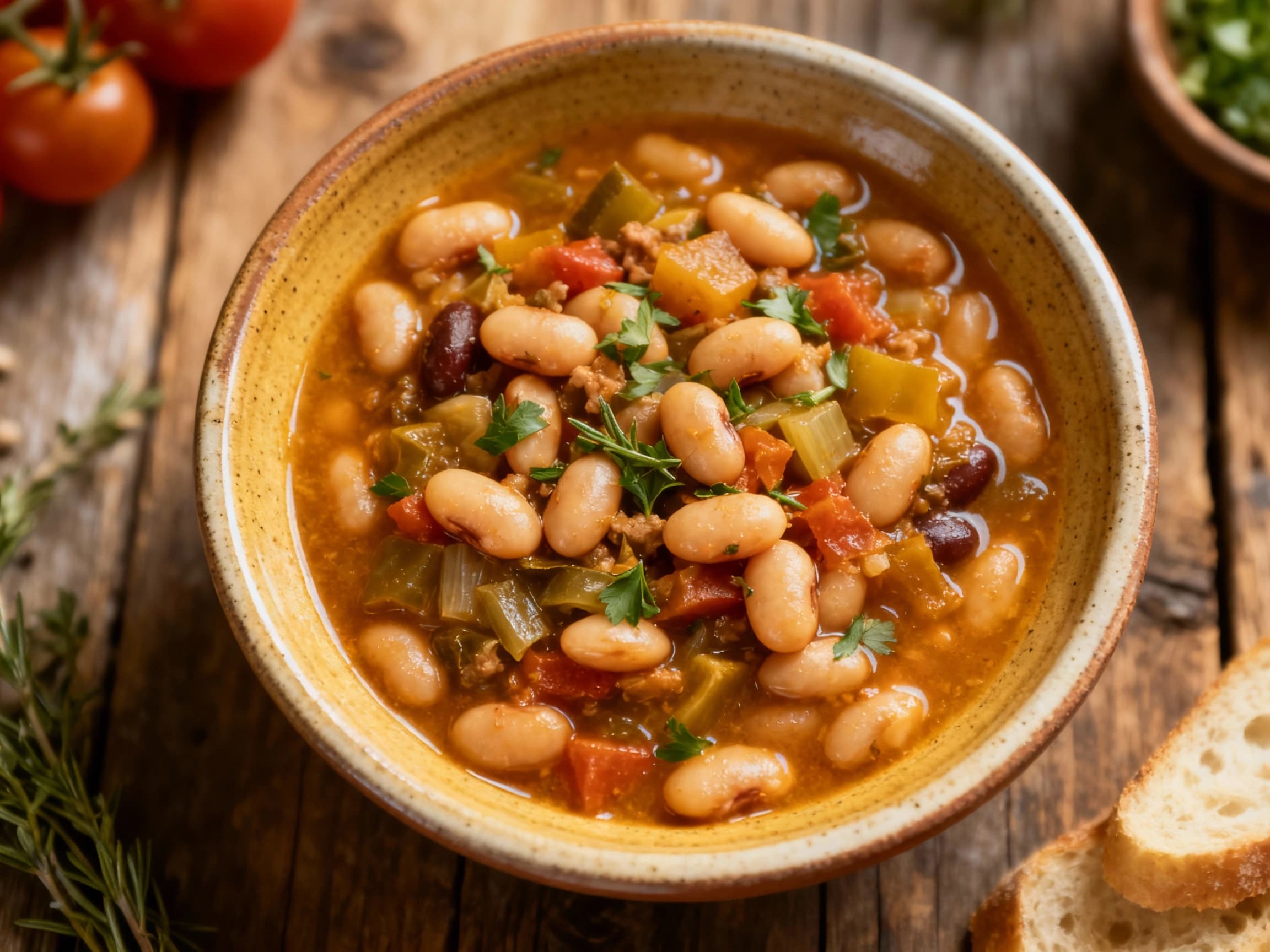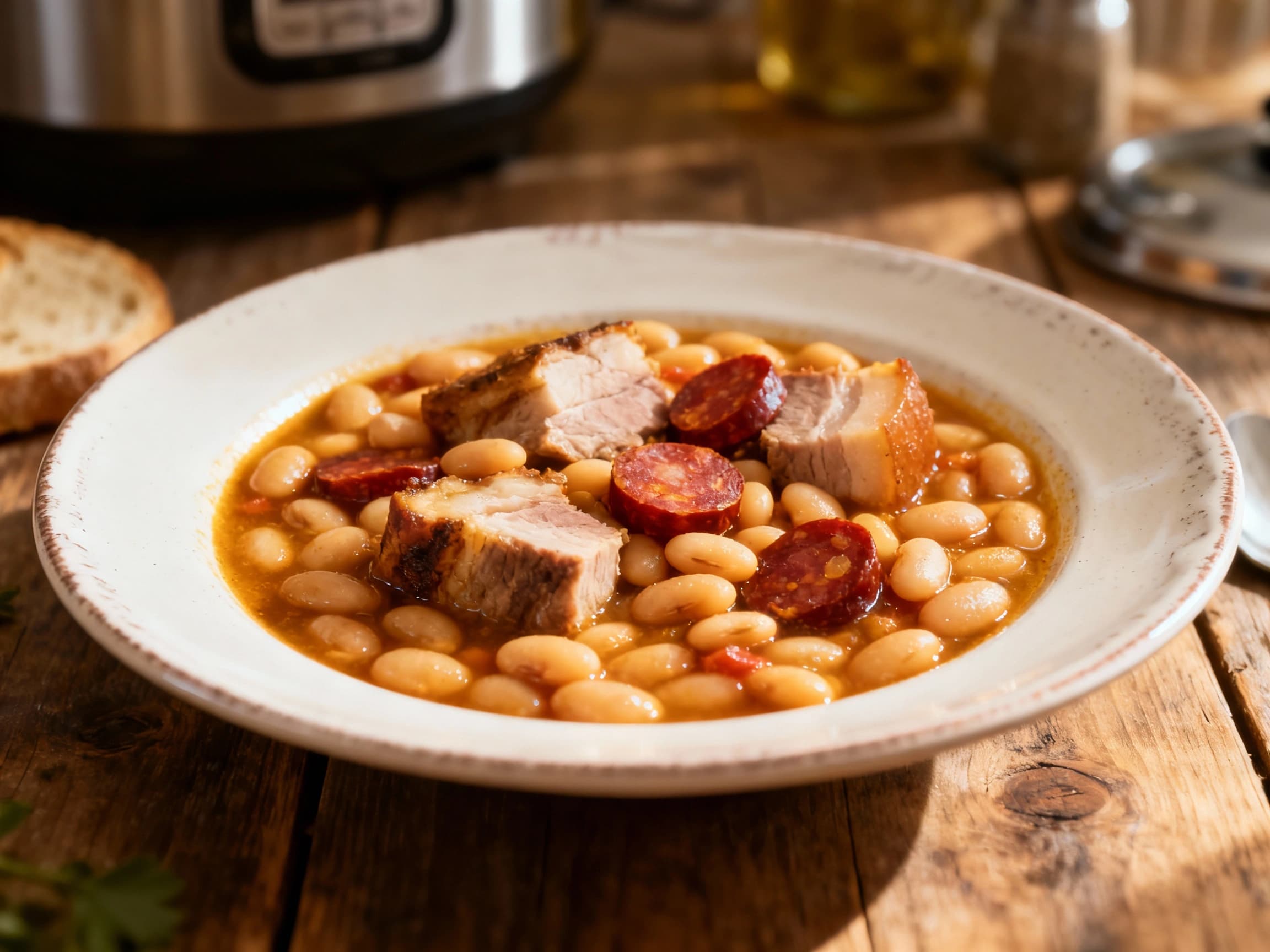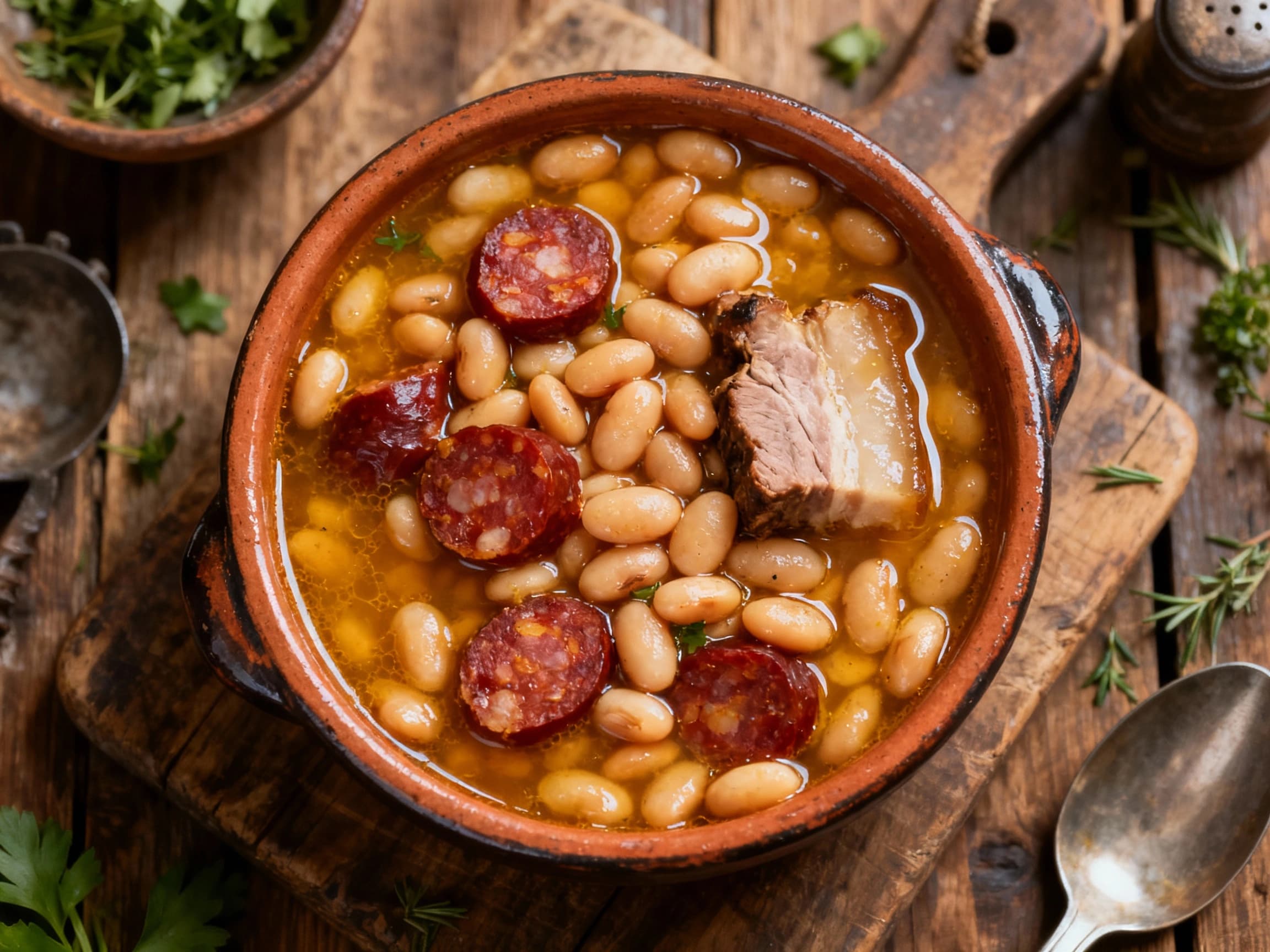
Fabada Asturiana
Fabada Asturiana
- Country
- Spain
- Region
- Asturias
- Recipes
- 3 Recipes
Dish information
Fabada Asturiana is the undisputed culinary emblem of Asturias, a verdant principality in Northern Spain known for its dramatic coastline, lush mountains, and cider culture. This hearty bean stew is a testament to the region's agricultural bounty and its history of robust, nourishing cuisine designed to combat the damp, cool climate. The dish's primary ingredient is the 'fabes de la Granxa,' large, creamy white beans native to Asturias. These beans are slow-cooked with a flavorful selection of Asturian pork products, including morcilla (blood sausage), chorizo (spicy pork sausage), and panceta (cured pork belly), along with ham. The long simmering process allows the beans to break down slightly, thickening the stew into a rich, unctuous broth, while simultaneously infusing them with the savory essence of the meats. Caracoles (snails) were also a traditional addition, though less common in modern preparations. The cooking is typically done in a 'perola,' a wide, shallow earthenware pot, often over a low heat for several hours. Fabada Asturiana is more than just a meal; it's a cultural institution in Asturias, often served as a lengthy, celebratory dish during important events, holidays, and family gatherings. It embodies the Asturian spirit of generosity and conviviality. The town of Villada, particularly, is famous for its 'Jornadas de la Fabada' (Fabada Days), celebrating this iconic dish. Its robust flavors and filling nature have made it a national favorite, often appearing on menus throughout Spain, especially during colder months. While the exact date of its creation is lost to time, its roots are firmly planted in the peasant traditions of Asturias, evolving over centuries into the refined yet rustic dish known today. The dish gained significant traction and recognition in the early 20th century, solidifying its status as a national culinary treasure.
Timeline
Introduction of beans (Phaseolus vulgaris) to Spain from the Americas.
Regional Asturian recipes for bean stews begin to take recognizable form.
The 'fabes de la Granxa' variety gains distinct regional identity.
First documented appearances of 'Fabada Asturiana' in Spanish culinary literature.
Fabada Asturiana becomes a signature dish of Asturian cuisine nationwide.
Growth of tourism in Asturias leads to wider appreciation of its traditional cuisine.
Establishment of specific culinary festivals celebrating Fabada Asturiana.


